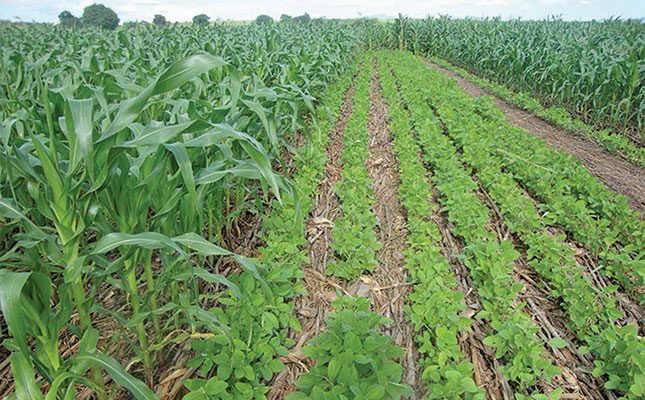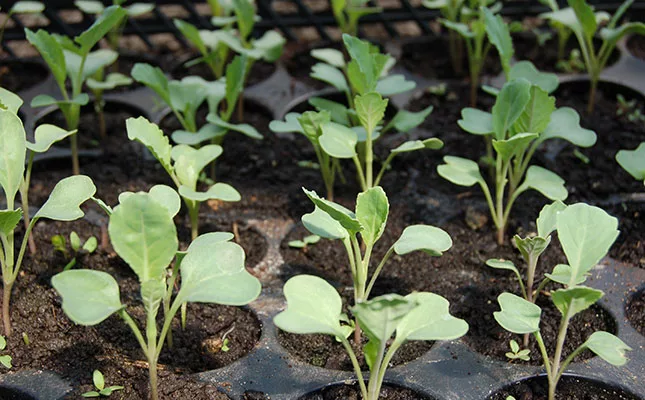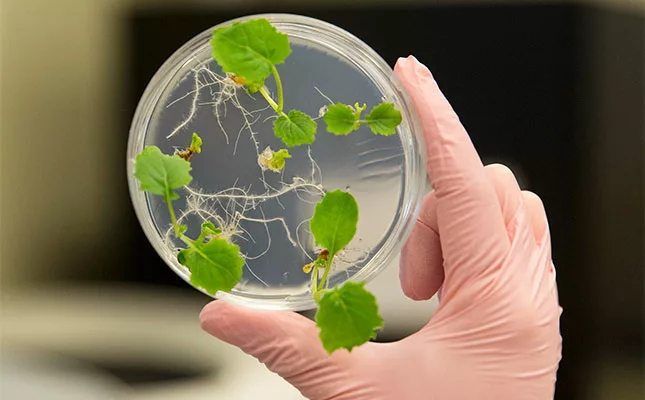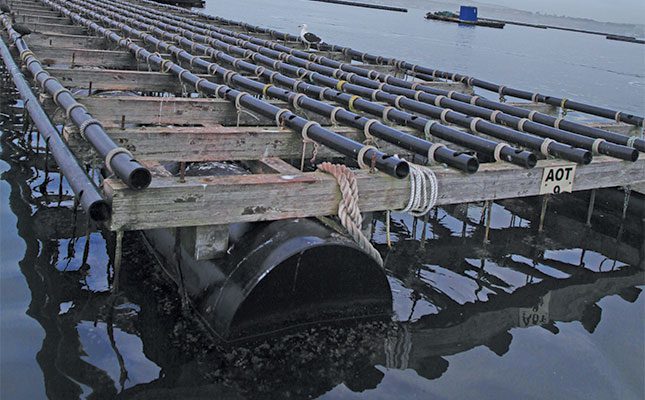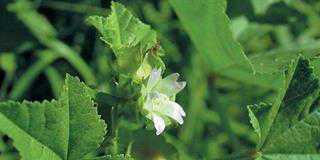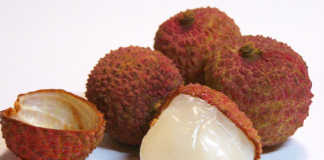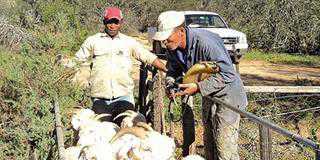
Photo: Lindi Botha
Lettuce (Lactuca sativa) has been cultivated for thousands of years as a leafy vegetable. Today, it is grown worldwide and considered one of the most important salad crops. In some countries, such as China, it is also consumed cooked.
In South Africa, lettuce is primarily grown for the local fresh market with cultivation concentrated in the Western Cape, KwaZulu-Natal, Mpumalanga, Gauteng, Eastern Cape, Limpopo and North West provinces.
Lettuce varieties
In South Africa, four main types of lettuce are commonly cultivated:
- Crisphead (Iceberg): Known for its tightly packed, firm heads, this variety is well-suited to open-field production and handles long-distance shipment.
- Butterhead: Recognised by its soft, waxy leaves and mild flavour, this type is less tolerant of heat and less suitable for field production or long-distance shipments.
- Looseleaf: Rather than forming a head, its leaves grow directly from the stem. It grows well both in the field and under protection and can be shipped long distance.
- Romaine (Cos): This variety has narrow leaves, an oval shape, dark, heavily ribbed outer leaves and lighter inner foliage. It is significantly more cold-resistant than the other types, able to tolerate temperatures as low as -5°C and is usually grown in the field.
Selecting the right cultivars for different planting times and local conditions is key to achieving good yields and crop quality. Farmers are advised to consult their local seed company for the latest cultivar information and recommendations.
The KwaZulu-Natal Department of Agriculture and Rural Development (KZN DARD) adds that “frequent testing of newly released cultivars should become routine practice for the serious producer.”
Marco Rugani of Toscana Herbs and Fresh Produce in Muldersdrift emphasises the importance of planning ahead: “You have to choose a variety with the cut date in mind. It’s no good planting in a warmer climate and then cutting the harvest in the cold.”
Climatic requirements
KZN DARD notes that temperature and soil moisture, together with correct cultivar choice, are among the most important factors affecting the success of lettuce production. Rugani agrees.
“Lettuce has specific climatic requirements, and sufficient water is also very important, especially when the crop is heading just before harvest.” (“Heading” is the term used to describe when lettuce leaves begin to overlap and form a compact, rounded head).
As a temperate crop, lettuce tolerates winter cold and light frost, although tolerance to both cold and heat can vary between cultivars. Heavy frost will damage the leaves and heads. The crop is sensitive to temperature fluctuations and germinates best between 15 to 20°C, while temperatures higher than 25°C may inhibit germination. Optimal growth is in the 12°C to 20°C range.
Although market demand for lettuce peaks in summer, growing it during this season presents several challenges. Diseases are more prevalent, and high temperatures increase the risk of bolting (the premature production of flowers and seeds).
Bolting is also exacerbated by growth stress, such as insufficient water. High temperatures (above 27°C) can reduce head quality and palatability and cause tipburn or seed stalk formation. For summer production, farmers must choose varieties with a tolerance to bolting and good disease resistance.
Soil requirements
While lettuce has high moisture requirements, it can be grown in a variety of soils, from light sandy to heavy clay, provided water and nutrient availability are managed correctly. It grows optimally in well-drained, fertile loams rich in organic matter.
“Deep, well-drained soils are suitable for most crops, including lettuce, but the latter, with its shallow root system, can be grown quite successfully on relatively shallow soils, provided a favourable soil moisture regime can be maintained,” says KZN DARD.
Proper soil preparation is vital. The soil should be worked to a fine tilth, clods eliminated, and the surface must be level to promote uniform emergence. Raised beds 20cm to 30cm high are ideal for lettuce production in the field, helping to prevent damage from soil compaction and waterlogging due to excessive rainfall.
This method also improves air circulation around the plants, which can lower the risk of disease.
Planting practices
Many commercial farmers use greenhouse seedlings, which can be transplanted throughout the year if conditions are suitable. During the summer months, seedlings must be properly hardened off before planting to reduce heat stress. Applying mulch during this period is also advisable to lower soil temperature, cool plants, retain moisture and reduce soil splash that can lead to disease.
Under optimal growing conditions, lettuce can be sown directly in the field at a depth of 10 to 15mm. Sowing times will vary by region:
- Cold areas with heavy frost: Sow from January to April and again July to December.
- Hot, frost-free areas: Sow from February to August/September.
- Warm areas with light frost: Sowing is possible year-round.
The seeding rate is around 1,5kg per hectare but can be as high as 3kg. In-row plant spacing varies from 250mm to 350mm and inter-row spacing from 350mm to 450mm, while plant populations can range from 60 000 to 100 000 plants per hectare.
“Spacing and plant populations can have a marked effect on total yield and on head size. However, as the inter-plant competition increases with higher-density plantings, head size becomes smaller. Head size is a very important quality factor, with the larger heads normally commanding higher prices,” explains KZN DARD.
Seedlings generally emerge within two to seven days after planting. Five to six weeks after sowing, seedlings should be thinned out to achieve the desired spacing. Some of these seedlings may also be transplanted in seed trays or seedbeds.
With a shallow root system, and roots only penetrating to a depth of 300mm, the crop requires frequent light irrigation, preferably via drip irrigation. Nutrient applications should also be limited to this depth.
Over-irrigating beyond this depth wastes water and causes nutrient leaching, KZN DARD points out. Throughout the growing period, lettuce requires regular irrigation, with a reduction when the heads have fully formed to avoid quality issues and disease pressure.
Fertilisation
“The soil is a resource that needs to be managed and monitored meticulously,” advises seed company Starke Ayers.
“It is essential that a grower have soil samples of the intended growing area analysed by an accredited laboratory to determine the nutrient status of the soil. Based on soil analysis results a fertilisation programme can then be developed. The grower should do this exercise every season or every time a new crop is planted on the land.”
The company also recommends water testing, as water quality can significantly affect plant growth. High calcium levels in irrigation water, for example, can raise soil pH, affecting nutrient availability and plant performance.
KZN DARD says while it is not possible to make accurate fertiliser recommendations without soil analysis, the approximate absorption of nutrients by a good crop of 40 tons per hectare is 110kg nitrogen (N), 14kg phosphorus (P) and 190kg potassium (K).
Typical diseases
To reduce the risk of disease build-up, KZN DARD recommends a three-year crop rotation.
“Few of the organisms causing diseases of lettuce attack other vegetable crops, so most other vegetables can be included in a rotation with lettuce,” it says. “However, Sclerotinia rot can affect many vegetable crops and, should this be a problem, the choice of suitable rotational crops is more limited.”
Wet and cool conditions create a favourable environment for Sclerotinia rot, a fungal pathogen that causes leaf discolouration, stem and crown rot, and a characteristic white mould. Another common fungal disease is powdery mildew. It presents as spots of white to greyish, powdery growth on the upper and lower sides of leaves. This disease needs warm, dry conditions and primarily affects mature lettuce.
Bacterial rot complex can also occur when plants are stressed or damaged. Bacteria penetrate the leaves causing leaf spots and eventual rotting.
For control of these and other typical lettuce diseases, the national agriculture department advises rotation with non-host plants such as onions.
“Always strive to plant disease-resistant cultivars, use disease-free seeds and use only registered chemicals. Discard infested plants and remove them from the field. Always keep your field free of weeds.”
Fast facts
The four main types of lettuce are crisphead, butterhead, looseleaf and romaine.
- Selecting the right cultivar and carefully managing temperature and soil moisture are essential to successful crop production.
- Crop rotation every three years with other vegetables helps to prevent diseases.
Sources:


